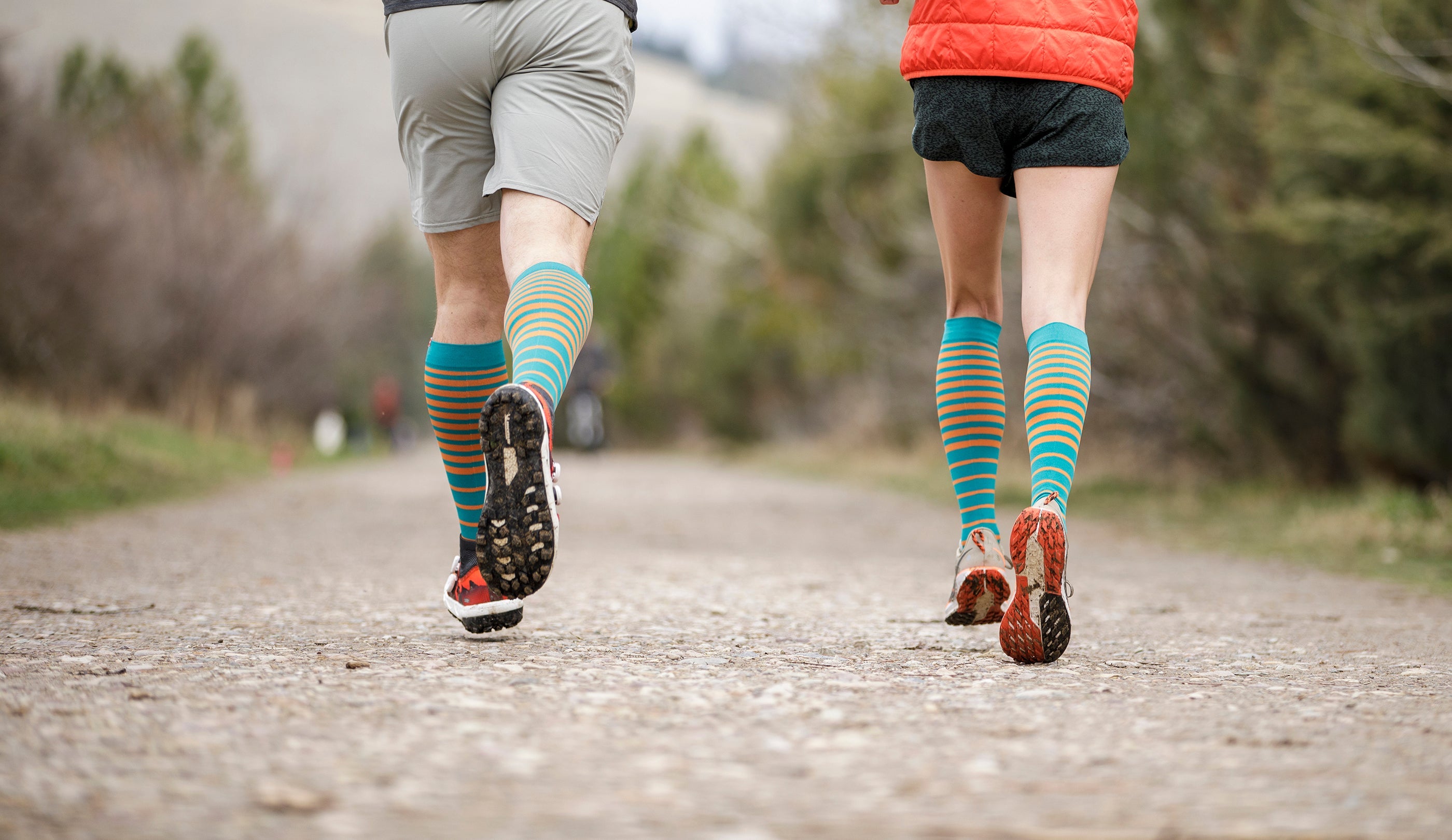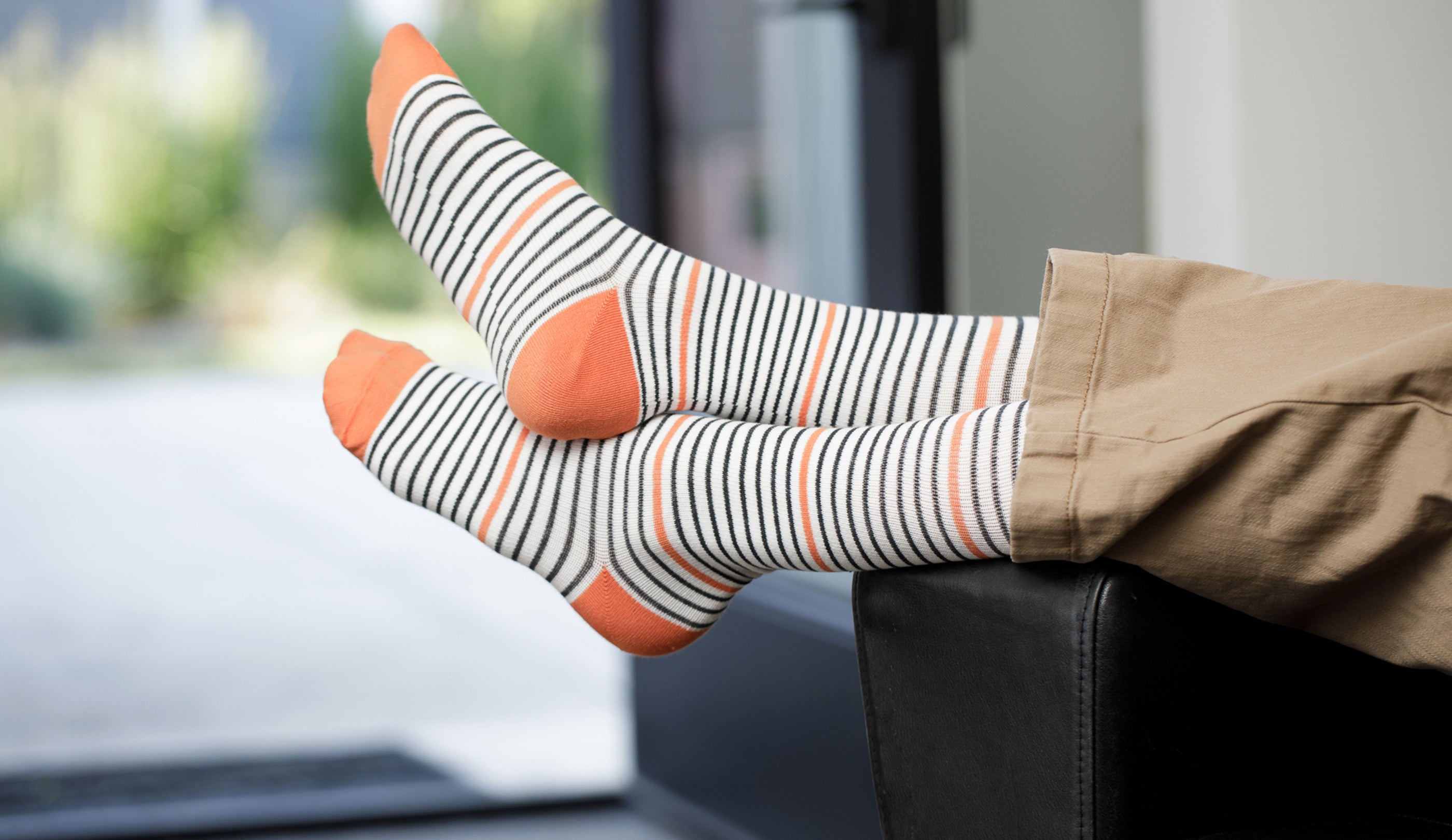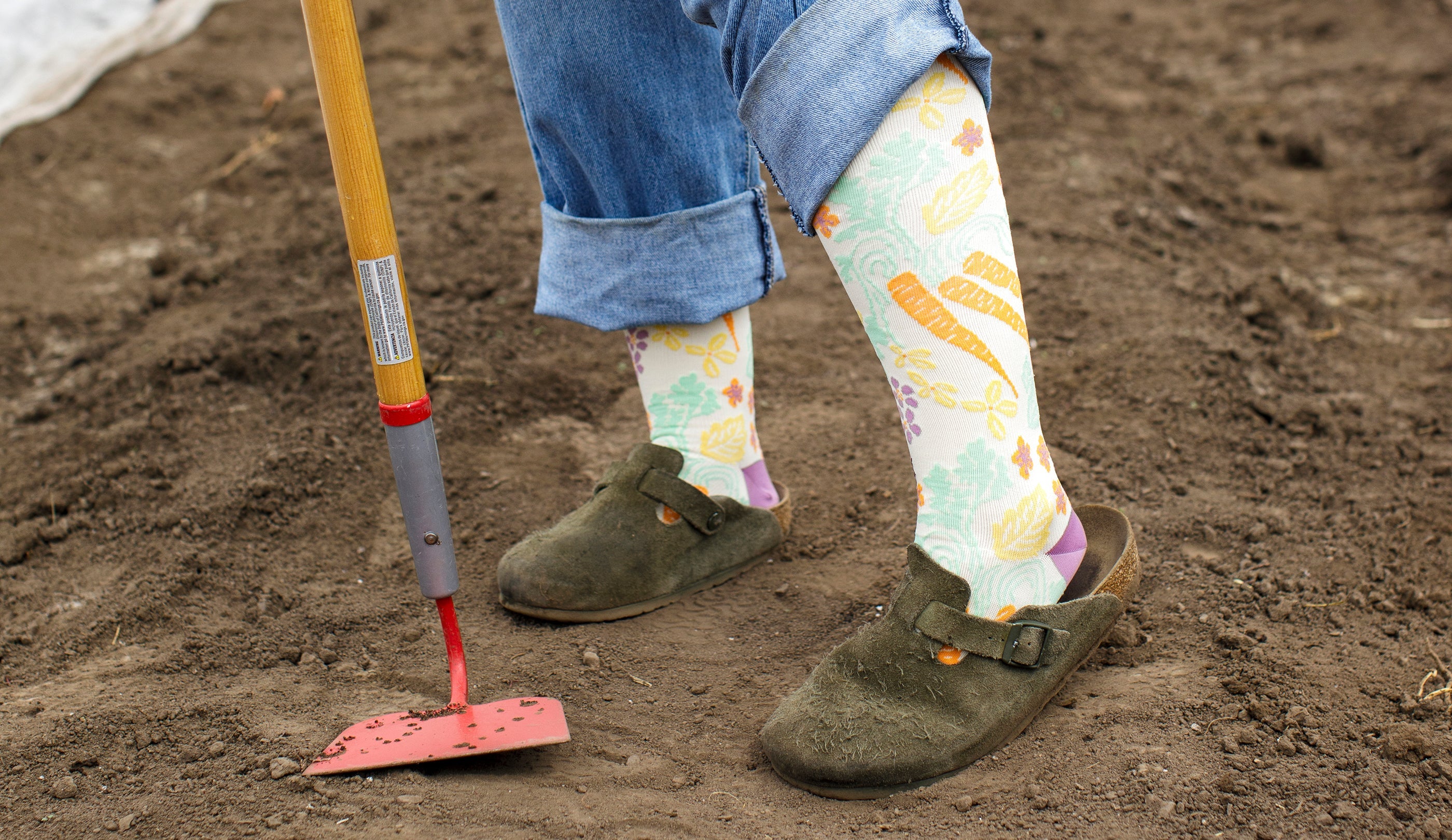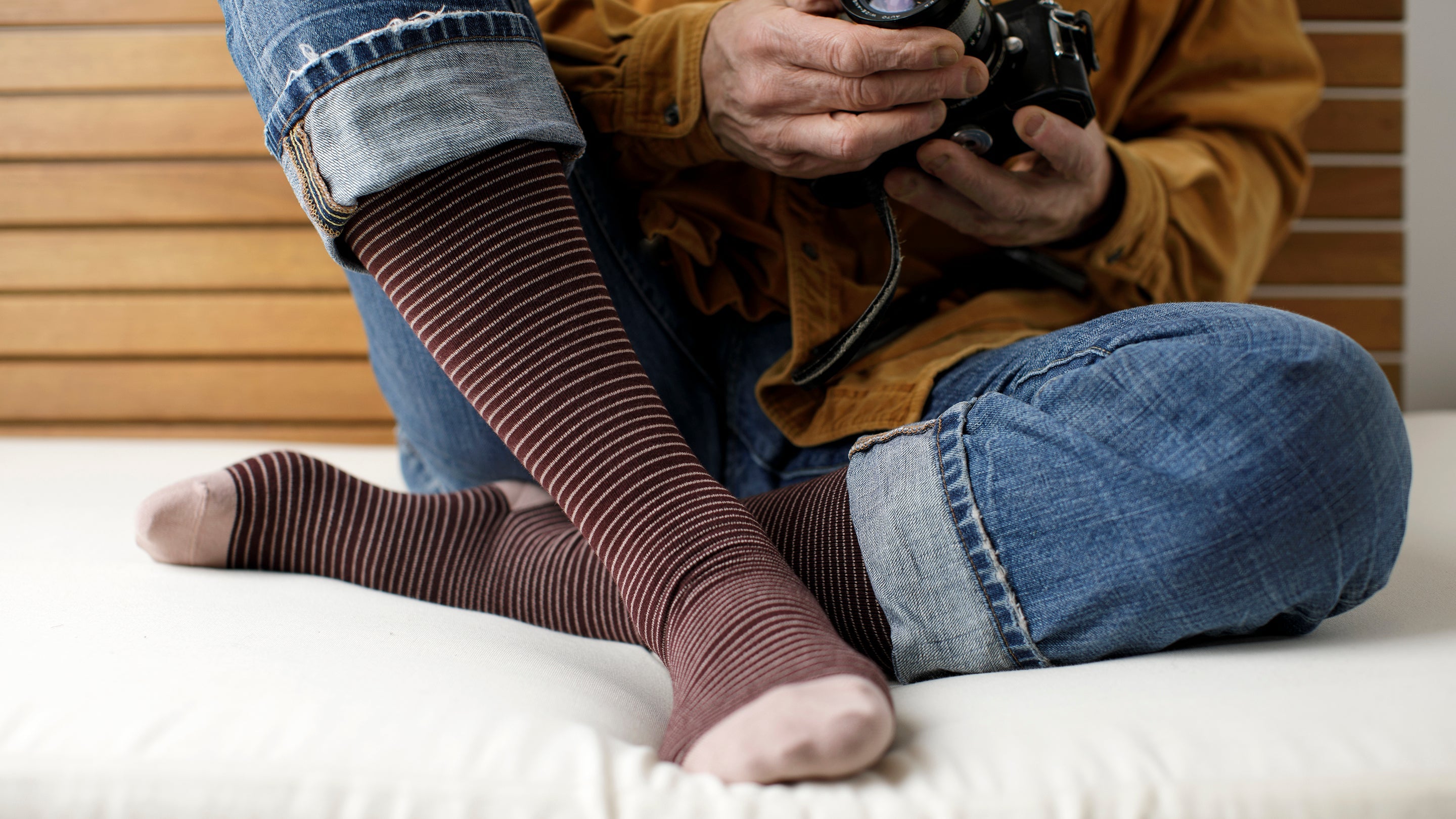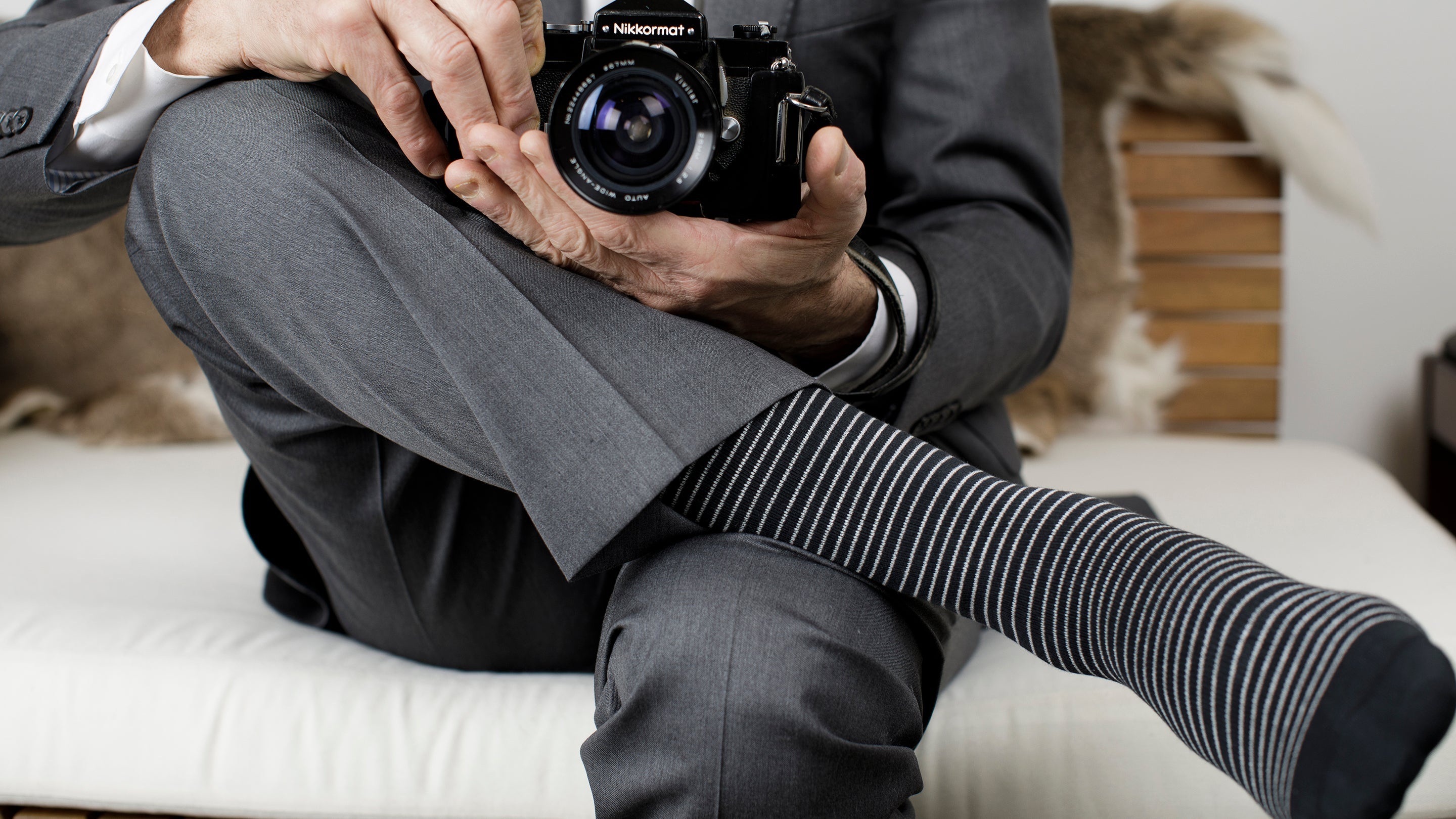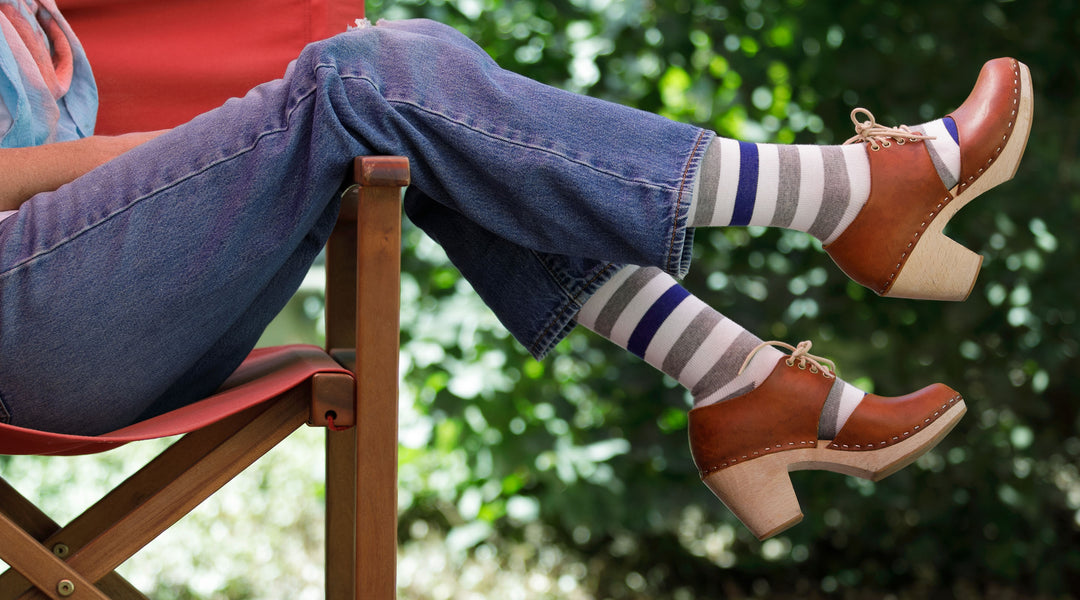

Very often, compression socks and stockings are recommended as one of the most effective ways to prevent the development of varicose veins or treat symptoms of varicose veins. This is thanks to the beneficial effects of compression socks, which include improving circulation, supporting the health of your lower leg veins, and preventing blood from pooling in the peripheral limbs. You also need to know about the benefits of wearing compression garments after interventions like sclerotherapy or varicose vein removal.
Wearing compression stockings after sclerotherapy offers your veins extra support as you recover from surgery, which may prevent other vein damage from developing. They are great for stimulating blood flow back through the body, which could enhance the positive results of your sclerotherapy.
Read on to understand more about why you should wear compression socks or stockings after sclerotherapy and get our tips on how to maximize their benefits.
What Happens If You Don’t Wear Compression Stockings After Sclerotherapy?
Sclerotherapy is an effective way to treat spider veins and varicose veins by injecting a chemical solution that closes off the vein wall. Then, blood stops flowing through the target veins, and the varicose veins fade within a few weeks. To boost the results of this intervention and to prevent other vein damage, wearing compression stockings is essential and extremely helpful. Clinical research found that wearing compression stockings after sclerotherapy helps your tissues heal more effectively, and you can feel less pain and heaviness.
Higher Risk of Blood Clots
One of the main risks of sclerotherapy is the formation of blood clots. The University of California San Francisco Health department warns that patients should avoid sedentary behavior after surgery. In fact, walking is widely recommended to prevent blood clots from forming following sclerotherapy, according to medical researchers. Wearing compression stockings maintains therapeutic pressure on the treated veins, which supporting vein healing and is known to reduce the risk of a blood clot.
People who have had surgery are at a high risk of blood clots and deep vein thrombosis. However, studies show that wearing compression socks significantly reduces this risk, thanks to the way these garments stimulate blood flow and reduce swelling and inflammation, while allowing you to rest and recover.

Increased Swelling and Discomfort
Temporary side effects of sclerotherapy include swelling and localized pain, as is normal with any type of surgery. After sclerotherapy, people can return to regular activity on the same day as the procedure, which is recommended. It is always great to benefit from added comfort and soothed legs as soon as you can, which is what compression legwear offers. With compression socks or stockings, all you need to do is wear your pair as you go about your normal day, and you will benefit from the gentle squeeze on the lower legs, which reduces your pain, swelling, and feelings of heavy legs.
Since they improve peripheral circulation, graduated compression socks help reduce swelling after surgery. They also soothe the legs, making you feel more relaxed and energized while they help reduce the soreness you feel from a sclerotherapy injection.
Delayed Healing Process
Better blood flow is often associated with better, quicker healing from an injury or medical procedure. Improved circulation through the treated veins helps move the blood, reducing the risk of clotting or pooling and bringing in oxygen and nutrients that promote healing. Compression stockings are well known to improve blood flow. This will help the skin recover from any surface pain or stinging from the intervention.
Less Effective Treatment Results
It is possible that the damaged veins you have just treated with sclerotherapy reopen and connect with other smaller veins, leading to the creation of new spider veins and undoing the benefits of the procedure. So, wearing compression stockings may be recommended to support blood flow and venous health in the affected area.

May Impact Varicose Vein Recurrence
If you do not follow post-operative instructions carefully, you run the risk of varicose veins forming again in the lower legs. Although sclerotherapy is highly successful in general, with only 8.7% of cases of recurrence in some clinics, some people could be more susceptible to varicose vein recurrence. This includes people who spend a long time sitting or standing or more at-risk populations (women, overweight patients, or those with a family history of varicose veins, among others).
Wearing compression stockings is an easy, low-involvement action that ensures your sclerotherapy results are optimal.
Risk of Bruising, Skin Discoloration, and Scarring
Some side effects of sclerotherapy include:
- Bruising: There can be temporary bruises because of the work done on the veins. These usually disappear in a few weeks, but wearing compression socks helps support the veins and increase blood flow, which may reduce bruising more quickly.
- Skin discoloration and burning sensations: It is normal to experience some changes to the skin surface as the treated leg veins are absorbed back into the body, but the staining should not be permanent. Wearing compression stockings helps protect the delicate skin area after sclerotherapy, avoiding other scrapes, and supporting the skin and muscles in the lower legs during your recovery.
- Scarring: Some patients experience small ulcers at the site of treatment, which are brought on by the treatment solution escaping into the surrounding skin or entering a small artery. You should speak to your doctor immediately if this happens. For simpler, smaller scars from injection sites, a research study found that wearing compression socks will help heal scars more quickly.
How Compression Socks Work After Sclerotherapy
Graduated compression socks apply therapeutic pressure to the lower legs, stimulating venous return (e.g., blood flow back to the heart) and supporting the veins, muscles, and joints. They are tighter towards the ankles, gradually releasing pressure upwards, which makes them effective in preventing blood from pooling at the periphery and therefore reducing the risk of blood clots, varicose veins, and deep vein thrombosis.
While compression socks can be great for preventing the onset of spider and varicose veins, they are just as helpful at improving your recovery and avoiding negative side effects after sclerotherapy:
- They boost circulation, helping your scars heal more quickly and avoiding swelling from blood pooling.
- They protect and support the lower legs at a time when the skin is sensitive post-intervention.
- They are soothing and relaxing, massaging the muscles and re-energizing the lower legs.
- They are versatile, easy to wear, and extremely stylish, completing your outfits and helping you look your best while also delivering multiple health benefits.

How Long to Wear Compression Stockings After Sclerotherapy
Generally, it’s safe to wear compression stockings for 24 hours at a time, but you need to consult with your doctor to find out what’s best for you after sclerotherapy. The usual advice is to wear a pair continuously in the first 24 hours after treatment and then wear them during the day for 7 to 10 days, taking them off at night.
You can continue wearing less firm compression socks during everyday settings, as you feel comfortable. If you’re going to be sitting or standing for long periods of time, or if you plan to fly or go on a long car journey, they are strongly recommended. Consult with a medical professional to find out how long and how frequently you should wear compression socks for the longer term, as this can depend on a variety of medical factors.
When to Start Wearing Compression Stockings After Sclerotherapy
You should start wearing a pair of compression stockings or socks immediately after sclerotherapy treatment. Be sure to consult your doctor first. This will help support your leg veins, improve blood flow, and protect your skin during your recovery.
Can I Take My Compression Stockings Off at Night?
After the initial 24-hour period following your treatment, doctors recommend wearing compression socks during the day and taking them off when you go to bed.
What Happens If I Forget to Wear Compression Stockings for a Day?
If you are past the first 24 hours after your treatment, you can be safe not wearing compression stockings for a day, but you still might have a higher risk of negative side effects. These most likely include:
- Swelling
- Bruising
- Some pain and discomfort
You can put on your compression socks as soon as you remember, and they will help improve your wellbeing from that point onwards.
Choosing Compression Stockings for After Sclerotherapy
Wearing graduated compression stockings after sclerotherapy not only speeds up recovery but also increases your chances of keeping a healthy blood flow throughout the body, reducing further recurrence of varicose veins and other complications. Here is how to choose the best pair for you.
Choosing the Right Compression Level
Compression stockings come in various levels of pressure, from “everyday wear” to prescription-only. Your doctor will be able to advise you on where to start, depending on the health of your circulatory system:
- If you need medical grade compression socks, these will come with a prescription and are the tightest you can get, offering great support just after surgery.
- For recovery and ongoing support for your circulatory system, particularly if you are prone to developing varicose veins, the 20-30 mmHg compression socks are both effective and stylish.
- The most casual compression level we offer at Vim & Vigr is 15-20 mmHg, which is supportive and firm enough to boost circulation and maintain vein health, while also helping you recover and relax after exercising - this can be a good choice for everyday wear and for working out, but check with your doctor if these socks will be firm enough for your situation.
Finding the Right Size
When you wear compression socks and stockings, it is important that they are tight enough to give you the benefits of compression, while also staying comfortable. You do not want them to cut off your circulation, but you also need socks that will not roll down or fold!
To ensure you are wearing the right size, we always recommend measuring the circumference of your calf muscles and then mapping that against our sizing chart, available with each product. You can find more information on sizing, compression levels, and materials here.
Material Options
The versatility of compression socks is increased by the various materials you can choose from:
- Cotton is an excellent choice for everyday wear, at the office or during a long plane ride; it is soft and breathable but will not wick away moisture as quickly as the other fabrics designed for higher levels of activity.
- Nylon is sleek and flexible, which makes it particularly good for physical activity such as running or cycling.
- Our moisture wick nylon collection pays particular attention to keeping your feet dry and breezy - one to pick during hot days.
- Merino wool is the “Swiss army knife” of fabrics, keeping feet cool in hot weather and warm when it gets cold out; it is also antibacterial and hypo-allergenic, so perfect for post-sclerotherapy recovery.
Considering Style and Length
One final thing to consider when picking your compression garments is what style and length you want. At a bare minimum, you will need knee-high compression socks that squeeze the lower legs and support your veins and muscles. Our graduated design further supports venous return to the heart, helping you avoid blood clots and swelling.
But your choice is not limited! After sclerotherapy, you can benefit from compression in open-toed socks if you’re keen to wear sandals or flip flops in the summer. Alternatively, for winter or for a workout, consider full-length compression tights or leggings.
If you have any doubts about what is best for your condition, always consult with a medical professional first.
Sclerotherapy is a simple intervention that helps remove varicose veins and spider veins, improving the look and health of your lower legs. Wearing compression socks and stockings immediately after helps improve your recovery, reducing the risk of blood clots and recurring varicose veins, while also boosting circulation overall. Choose from a wide range of Vim & Vigr compression socks that you can wear pretty much anytime, anywhere, to suit your activity levels and lifestyle.
References
Burgstaller, J. M., Steurer, J., Held, U., & Amann-Vesti, B. (2016). Efficacy of compression stockings in preventing post-thrombotic syndrome in patients with deep venous thrombosis: a systematic review and metaanalysis. VASA. Zeitschrift fur Gefasskrankheiten, 45(2), 141–147. Read it here.
Cavezzi, A., Mosti, G., Colucci, R., Quinzi, V., Bastiani, L., & Urso, S. U. (2019). Compression with 23 mmHg or 35 mmHg stockings after saphenous catheter foam sclerotherapy and phlebectomy of varicose veins: A randomized controlled study. Phlebology, 34(2), 98–106. Read it here.
Charles, T., Mackintosh, D., Healy, B., Perrin, K., Weatherall, M., & Beasley, R. (2011). Merino wool graduated compression stocking increases lower limb venous blood flow: a randomized controlled trial. Advances in therapy, 28(3), 227–237. Read it here.
Christensen, L. M. R., Arnesen, C. E., Möller, S., & Hyldig, N. (2021). The effect of compression therapy on post-surgical swelling and pain after total knee arthroplasty. International journal of orthopaedic and trauma nursing, 41, 100815. Read it here.
Danneil, O., Dörler, M., Stockfleth, E., & Stücker, M. (2022). Factors influencing superficial and deep vein thrombosis after foam sclerotherapy in varicose veins. Journal der Deutschen Dermatologischen Gesellschaft = Journal of the German Society of Dermatology: JDDG, 20(7), 929–938. Read it here.
De Decker, I., Beeckman, A., Hoeksema, H., De Mey, K., Verbelen, J., De Coninck, P., Blondeel, P., Speeckaert, M. M., Monstrey, S., & Claes, K. E. Y. (2023). Pressure therapy for scars: Myth or reality? A systematic review. Burns : journal of the International Society for Burn Injuries, 49(4), 741–756. Read it here.
Rabe, E., Breu, F. X., Flessenkämper, I., Gerlach, H., Guggenbichler, S., Kahle, B., Murena, R., Reich-Schupke, S., Schwarz, T., Stücker, M., Valesky, E., Werth, S., & Pannier, F. (2021). Sclerotherapy in the treatment of varicose veins: S2k guideline of the Deutsche Gesellschaft für Phlebologie (DGP) in cooperation with the following societies: DDG, DGA, DGG, BVP. Englische Version. Der Hautarzt; Zeitschrift fur Dermatologie, Venerologie, und verwandte Gebiete, 72(Suppl 2), 23–36. Read it here.
Sachdeva, A., Dalton, M., & Lees, T. (2018). Graduated compression stockings for prevention of deep vein thrombosis. The Cochrane database of systematic reviews, 11(11), CD001484. Read it here.
Tan, M. K. H., Salim, S., Onida, S., & Davies, A. H. (2021). Postsclerotherapy compression: A systematic review. Journal of vascular surgery. Venous and lymphatic disorders, 9(1), 264–274. Read it here.
